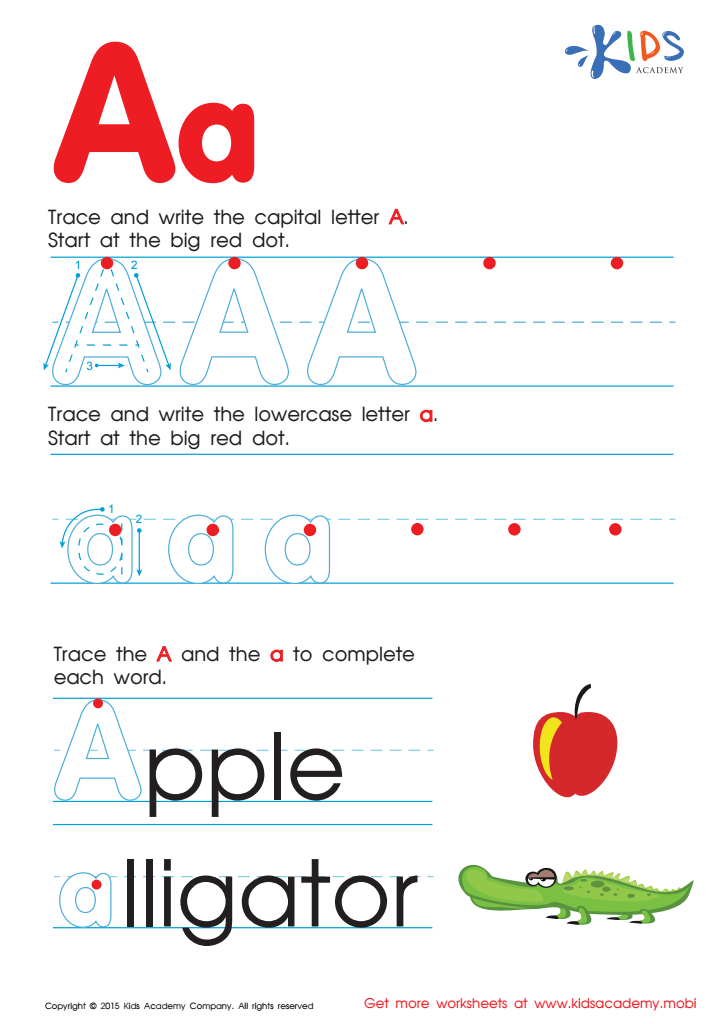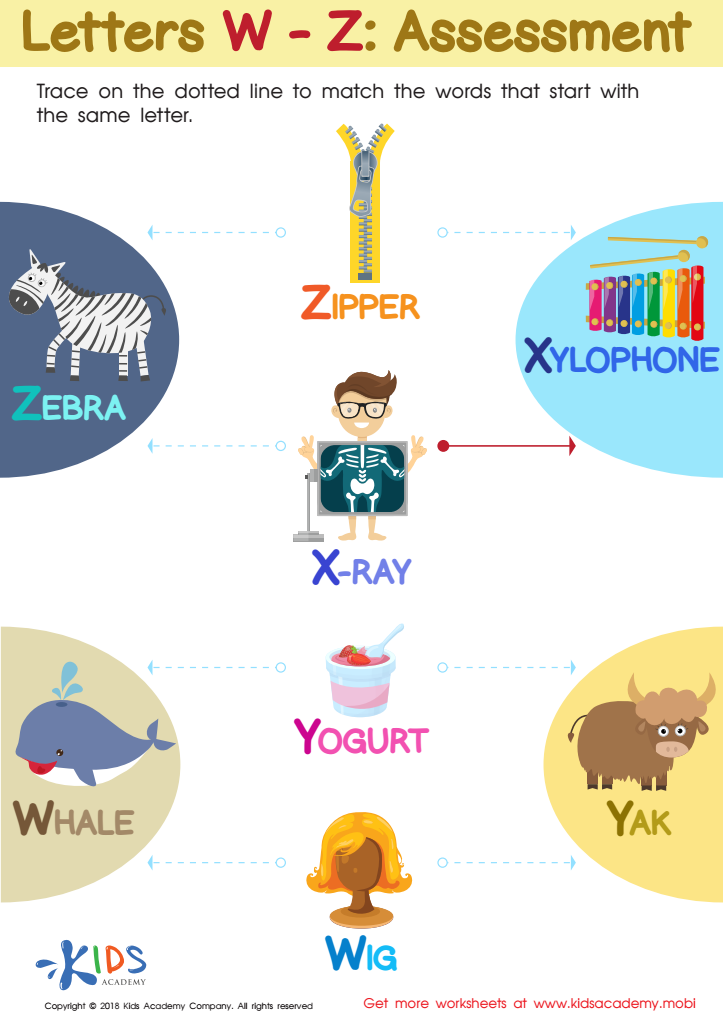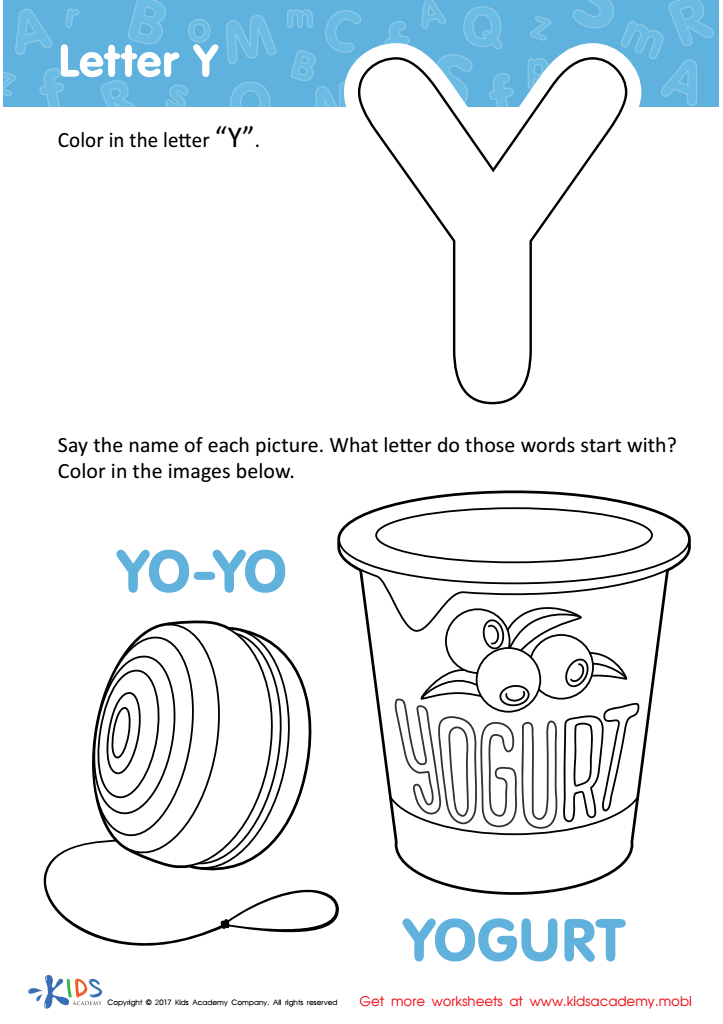Letter formation Letter Recognition Worksheets for Ages 3-7
5 filtered results
-
From - To
Discover engaging and educational Letter Formation and Recognition Worksheets tailored for children ages 3-7. Our expertly designed printables help young learners practice essential handwriting skills, fostering early literacy development. Each worksheet focuses on individual letter formation techniques, making the learning process both fun and efficient. Perfect for preschoolers, kindergarteners, and first graders, these activities promote fine motor skills as kids trace, write, and identify letters. Enhance your child's alphabet fluency and boost their confidence with our targeted, age-appropriate resources, developed to support parents and teachers in teaching foundational literacy skills. Start your learning journey today!


Letter A Tracing Page


Letter P Tracing Page


Letter G Tracing Page


Letters W–Z Tracing Worksheet


Letter Y Coloring Sheet
Letter formation and letter recognition are foundational skills vital for children aged 3-7 as they form the bedrock for literacy development. During these formative years, young minds are rapidly developing fine motor skills, cognitive abilities, and neural connections necessary for writing and reading. Mastery of letter formation aids children in developing clear and legible handwriting, which is essential not just for future academic success but also for effective communication. It reinforces memory retention and nurtures the child's attention to detail, which can aid in overall learning.
Letter recognition, on the other hand, enables children to identify and name both uppercase and lowercase letters swiftly. This skill is a critical precursor to phonemic awareness – understanding that letters and combinations of letters make specific sounds, which ultimately leads to reading fluency. Early letter recognition improves vocabulary, comprehension, and the ability to construct sentences, all of which are critical for expressing ideas clearly and participating actively in the classroom.
Neglecting these skills might result in children falling behind their peers, which can affect their confidence and enthusiasm for learning. Therefore, parents and teachers play a crucial role in providing consistent, engaging, and supportive environments to develop these essential literacy skills in young children.

 Assign to My Students
Assign to My Students




















